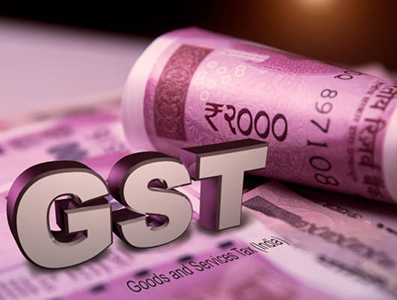What is the GST Return?
A GST return is a tax filing document that a taxpayer is expected to file with the tax administration authorities, detailing all income/sales and/or expenses/purchases. Tax authorities use this to compute the net tax liability of the taxpayer.
The broad categories under GST filings include:
- Inward Supplies: Purchases
- Outward Supplies: Sales
- Output GST (On sales)
- Input GST (Input Tax Credit)
- Other details as prescribed in the document
Also Read: GSTIN: What Is GSTIN Number? – Check & Verify GSTIN/UIN Number Online?
Who should file GST?
All GST-registered business owners and dealers are required to file GST returns based on the type of their business or transactions.
The following section shall provide information about the different types of GST Returns, who should file them, and the due dates of filling respective GSTRs.
Different types of GST Returns
-
GSTR – 1: GST Return for Outward Supply
It is a monthly return of a registered taxpayer’s outward supply of taxable goods and/or services. It displays a company’s sales transactions for a certain month, including debit and credit notes, and updated invoices.
Who should File them? Every taxpayer registered under the GST regime must file GSTR-1 on a monthly basis.
Due Date for Filing GSTR-1: The closing date for filing GSTR-1 is 10 days after the end of the month for which the return is due.
-
GSTR – 2: GST Return for Inward Supplies
GSTR-2 includes information on the recipient’s purchases for a specific month. The information in GSTR-2 is automatically filled in using the information provided in GSTR-2A. GSTR-2A is a read-only document that is auto-generated whenever the supplier enters the information in GSTR-1. It allows the recipient to double-check the information provided in GSTR 1.
Who should file GSTR – 2? Every typical registered GST taxpayer is expected to disclose data about inbound supply or purchases made for each month.
Due Date for Filing GSTR-2: The procedure of making modifications and filing GSTR-2 must be completed between the 11th and 15th day of the succeeding month for which return is to be filed.
Also Read: All About GST, GST Full Form & Meaning, Types Of GST In India – What Is CGST, SGST, And IGST?
-
GSTR – 3 has been suspended from September 2017
-
GSTR – 3B: Summary of Inward and Outward Supplies
This statement includes a description of outbound supplies, as well as a declaration of an input tax credit. It is also submitted for periods in which there is no tax liability. That is, if a taxpayer has no external or inbound transactions during a given month, he or she must file a Nil Return.
Due Date for Filing GSTR-3B: The GSTR-3B must be submitted by the 20th of the month after the tax period for which GST is filed. If no transactions were carried out in a given month, the registered individual must file a NIL return for that month.
-
GSTR – 4: GST Return under Composition Scheme
GSTR-4 is a quarterly return that a registered taxpayer who has enrolled in the Composition Scheme must file. Small taxpayers with a turnover of up to Rs 1.5 crores are required to pay tax at a lower rate under this plan.
The Composition Scheme was created as part of the GST to help small taxpayers with compliance. Every registered taxpayer who chooses the Composition Scheme must complete a quarterly GSTR-4 return.
The due date for filing GSTR-4 is the 18th of the month after the quarter for which such a return is required to be filed.
-
GSTR – 5: GST Return for Non-Resident Foreign taxable persons
Every non-resident individual who is subject to taxation in India is required to file a monthly return using GSTR – 5. The GSTR – 5 provides information on inbound and outbound supplies, as well as the amount due, tax paid, and any interest or penalties assessed.
Only a non-resident taxable individual is required to file this form. They are not required to file any yearly returns. A non-resident taxable person is someone who does not have an established place of business in India or is not a citizen of the country.
Due Date for Filing GSTR-5: The details in GSTR 5 must be filed within 20 days after the end of the calendar month or within 7 days after the last date of validity of the registration, whichever comes first.
Also Read: All You Need To Know About GST Amendment Process
-
GSTR – 6: GST Return for Input Service Distributor
GSTR 6 is a monthly return to be filed by Input Service Distributors. This statement details all invoices for which credit has been granted and which have been issued by an Input Service Distributor.
Due Date for Filing GSTR-6: GSTR-6 is due on the 13th day of the month following the month for which tax is to be paid.
-
GSTR – 7: GST Return for government authorities deducting tax at source (TDS)
GSTR 7 is a monthly return to be filed by the persons who are obligated to deduct TDS under GST provisions. Such a return consists of the details regarding the TDS, TDS liability, TDS refund, and any interests or late fees and penalties.
Due Date for Filing GSTR-7: The deductor must file Form GSTR-7 within 10 days of the end of the month in which the deduction was made.
-
GSTR – 8: GST Return For E-Commerce Operators Collecting Tax at Source
Every electronic commerce operator who is obligated to deduct Tax Collected at Source under GST must file a monthly return known as GSTR 8. This report includes information about the purchases made through an e-commerce platform, as well as the tax collected from vendors of goods and services.
Due Date for Filing GSTR-8: The deadline for filing GSTR-8 is the 10th day of the month following the month for which TCS is to be collected. In addition, the operator must file an annual statement in GSTR 9B in the approved manner. Each financial year’s return must be filed by the 31st of December after the conclusion of the fiscal year.
Also Read: The Ultimate Guide With GST Search
-
GSTR – 9: GST Annual Return for a normal taxpayer
Every registered taxpayer is required to electronically submit their annual records in the approved format to the GST portal. The following people are not required to file yearly returns: Input service Distributors, casual taxable persons, non-resident taxable persons, and people who are taxed under Section 51 or 52.
The Due date for filing GSTR 9 is by 31st December of the next fiscal year.
-
GSTR – 9A: Suspended
-
GSTR – 9C: Certified reconciliation Statement
Every registered person with annual revenue of more than Rs. 2 crores must have his or her accounts audited by a chartered accountant. He must also provide the annual return, a copy of the audited financial statements, and a reconciliation statement. Form GSTR 9C forms the reconciliation statement.
Due Date of filing: GSTR-9C must be filed on or before December 31st of the year after the relevant fiscal year under audit.
-
GSTR – 10: GST return by Registered Persons whose GST Registration is canceled
A registered individual whose GST registration is revoked must file GSTR-10 as a final return. Such a registered person does not include Input Service Distributor, Non-resident taxable person, Person collecting TDS or TCS and Person paying tax under composition scheme.
Due date of filing GSTR 10 is three months from the date of cancellation or three months after the date of cancellation order.
-
GSTR – 11: GST Return for Unique Identification Number (UIN)
GSTR-11 is a return in which a person with a UIN provides details of inward supply and claims a refund. GST paid on products and services purchased in India can be claimed back by a registered individual with a UIN. UIN, in practice, is generally allotted to diplomatic missions and foreign embassies who are not obligated to pay taxes in India.
The due date for filing GSTR-11 is the 28th of the month succeeding the month in which inward supplies are received by the UIN holders. This implies that GSTR-11 isn’t filed on a monthly basis. Rather, as and when the supplies are made, this form is filed on a case-by-case basis.
Also Read: How To Track GST Registration Status
SUMMARY
For Regular businesses and their registered taxpayers, the tax returns are:
- GSTR 1: For outward supplies
- GSTR 2: For inward supplies
- GSTR 3: Consolidated monthly tax returns
- GSTR 3B: Temporary consolidated summary return of inward and outward supplies
- GSTR 9: Annual consolidated tax returns
- GSTR 9C: Audit statements as Certified Reconciliation Statement
Other types of Businesses
- GSTR 4: For businesses under composition scheme
- GSTR 5: For non-resident foreign taxpayers
- GSTR 6: Monthly returns for input service distributor
- GSTR 7: Monthly returns for tax deduction at source
- GSTR 8: Monthly return for e-commerce operators
- GSTR 9B: Annual return to be filed by e-commerce operators collecting tax at source
- GSTR 10: Return by the person whose GST registration is canceled
- GSTR 11: Return for taxpayers with unique identification numbers
Also Read: Process For Online Registration For GST

